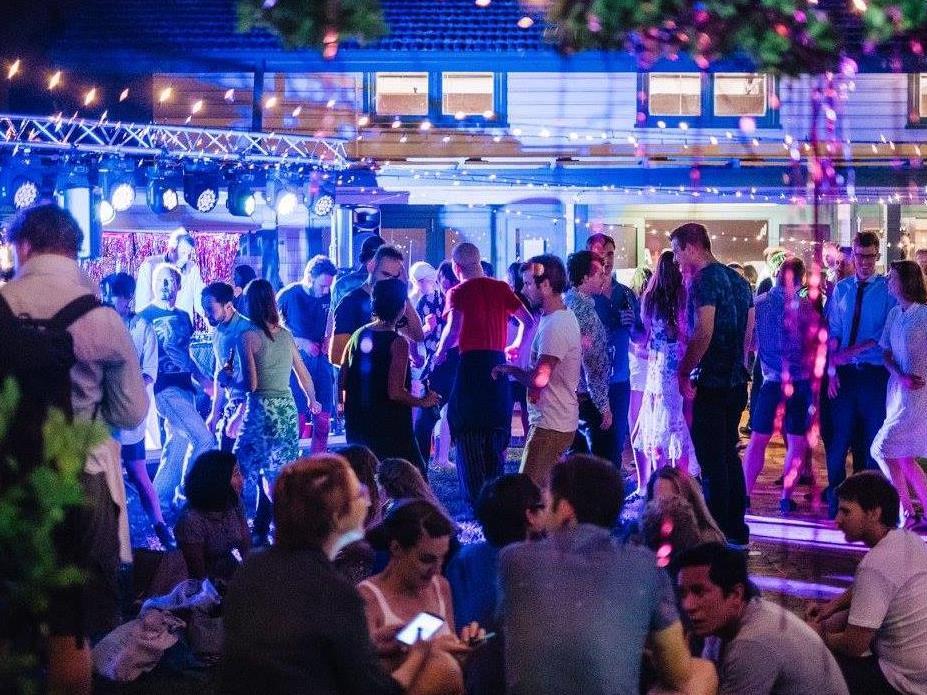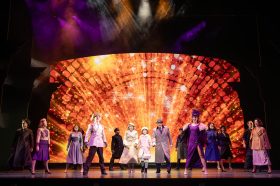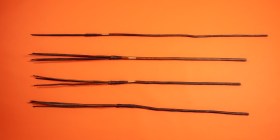Photo: Ainslie and Gorman Art Centres.
Canberra – largely known for the confusion created by its roundabouts and Federal Government – is also as a city whose residents regularly find themselves coming up against misconceptions long-held by interstate visitors, who see the capital as ‘out of touch’ due to an ongoing perception of the city as a site of concentrated privilege compared to the rest of Australia.
But this image of Canberra undermines the reality of what it’s like to live and work as a creative in the city, and focuses, perhaps a little too much, on the people who work in government and public service. Meanwhile, the arts are largely recognised as the important national institutions that inform the city’s character, however this only makes up one part of the creative arts in Canberra. There’s a lot going on there that deserves attention.
We asked several arts workers what misconceptions still exist about Canberra today, and what it’s really like to live and work there.
MYTH: It’s Canberra’s fault
People seem really attached to the dialogue between Canberra and the rest of the nation that has emerged over the years, commented Caroline Stacey, Artistic Director/CEO, The Street Theatre. ‘It’s almost like [the conversation] is stuck in a particular groove…which is not my experience of the place.
‘Certainly this city is informed by politics and the politicians and staffers that flow through the city but it’s certainly not defined by that, and so the sense that all of Canberra stems from Capital Hill is just not accurate, not right.
‘It just seems a strange way and not a nuanced way to think about the place, and I just find it quite peculiar. It’s not my experience of Wellington in New Zealand or Washington in the States, and it doesn’t also capture the flow internationally of how Canberra connects with the rest of the world, even through the embassies, that cluster of embassies that are here, and those conversations – that are also political conversations but of a different nature.’
The fallout from this misconception which conflates Parliament with the city negatively affects the local professional and independent performing arts sector. ‘The sort of commentary and editorial and review processes are difficult to initiate in this place, so I would say that there is a feeling that Canberra’s arts organisations and the artists that chose to be based here are not as visible as they might be,’ said Stacey.
Read: All roads lead to The Street Theatre
MYTH: There are less opportunities for artists
Joseph Falsone moved to Canberra 14 years ago. After a range of roles, including in the arts development team at artsACT, and as a curatorial intern at the National Gallery of Australia, he eventually found himself working at M16 Art Space, a former bus repair depot in Fyshwick that now houses some 30 artist studios and gallery.
Today he works as Director of Ainslie and Gorman Arts Centres, home to the largest collective of professional artists and arts companies in the city. Falsone said developing the M16 Art Space in 2011 was a huge project that opened his eyes to the quality of visual arts practice in the city and also the opportunities available.
He commented on the size of Canberra as a smaller jurisdiction, and yet still a large city, and how this scale contributes to the kinds of opportunities available to artists and arts entrepreneurs.
‘When I think about that M16 project and about what we’re doing here at Ainslie and Gorman, I can’t help thinking that in some ways, being in a larger city might enable us to access greater resources, but at the same time I think there’s something about Canberra as a city-state if you like that enables arts organisations and artists to work in slightly different ways.
‘I mean, we’ve got one less layer of government – it’s funny, we talk about Canberra as being a political place but when I was down in Melbourne recently talking to people, in Melbourne of course you’ve got local councils, say the City of Melbourne, the state government and the federal government. So in that respect you’ve possibly got more opportunities to engage with government but perhaps you’re over-governed in a way we’re not, which I think is an interesting take on it.
‘Canberra is a place where the city is evolving. And because the scale of the city is such that you can build relationships and work on a canvas, if you like, that’s a scale that is something like a small town at the same time as having the resources of a city and gives an interesting opportunity I think for arts entrepreneurs to make things happen.’
Read: Greater than the sum of its parts
MYTH: There’s nothing to do
The glass art that comes out of Canberra is internationally regarded as some of the best in the world. This is thanks to the existing infrastructure available in the area through Canberra Glassworks, and also a rich history of education opportunities that began when acclaimed artist, Klaus Moje AO established the Glass Workshop at the Canberra School of Art (now known as the ANU School of Art and Design) in 1983.
Artist Kirstie Rea grew up in Canberra and works from her studio near the city. ‘I love it. I think it is a really fantastic place for an arts practice. It’s quiet, it has a lot of major art institutions and they are all accessible. If there is an opening somewhere, even if it is across town, I can easily go. Whereas I find a lot of friends in Sydney and Melbourne say, “I’m not crossing town”, but Canberra is really accessible.
‘I love that. Every week we’ll be going to an opening somewhere and it is really accessible. You just jump in the car and go up the road for an opening.’
‘People say, how can you live in Canberra? But I just say, I’m not telling you how great it is. It comes back to that thing on the news, whether you are on social media or traditional media where they say, “In Canberra today”, in fact it is actually up at Parliament House. There is a whole city here that has nothing to do with politics and all that stuff. But for art practice is has a fantastic art school and it has lots of great institutions that have amazing exhibitions.’
Read: How Canberra glass artists make their mark overseas
MYTH: Everyone leaves Canberra (for good)
‘People say “Canberra” as shorthand for the federal government or some wider festering sore, whereas in fact Canberra is a city and a town in a region, and it’s a community, or a series of overlapping communities. And there’s a very strong sense of that, and a really strong regional sense as well,’ said Deborah Clark, Senior Curator, Visual Arts, at the Canberra Museum and Gallery.
‘No other Australian city has that kind of elision or identification with something like the federal government, it’s crazy.’
Clark first moved to Canberra in 1985 for her first professional arts job and then returned to the city in 1991 with her husband and young son after living in Perth for three years. While it is true that Canberra has higher levels of migration from the city (particularly after the age of 47), a number of people also return.
‘We just were both enmeshed in the visual arts community and just sort of grew with it,’ she said. The couple planned to stay for five years, but 25 years later they still enjoy living there.
‘It’s a fantastic region, a fantastic arts community, it really punches above its weight, and it’s really supportive. Big enough to be really interesting but not big enough to have factions, so that makes for a really energised visual arts community and it is sort of an overlapping community and taking in, you know, the Cooma, Monaro and towards the coast, Queanbeyan of course, and people who live in those places interact with the School of Art or the Gallery, the national institutions and contemporary art spaces and so on. It’s all sort of interlocking.’
Read: Anniversary exhibition celebrates rich artistic history
MYTH: The arts are for tourists
‘I was so excited to come down here because I could see the opportunities,’ said Suzanne Hannema, Marketing Manager and Assistant Director at Canberra Theatre Centre.
Hannema said she didn’t hold any misconceptions about the city before relocating and what she found was a strong interest in arts and culture and a local audience that enjoys variety.
‘I think that they’re very supportive of the arts to be honest with you, and I think that what we have found is that if you bring the product and you let them know that it’s here, they’re very much into experiencing that. They shouldn’t have to travel out of state to see a concert, they shouldn’t have to travel out of state to see everything that every other major city in Australia has.’
Read: Musical success puts Canberra Theatre Centre firmly on the map
MYTH: It’s all national arts institutions
Dr Christopher Chapman, Senior Curator at the National Portrait Gallery, moved to Canberra from Sydney in 1990. ‘I was immersed in a vibrant visual arts culture populated by artists, curators, lecturers, writers… It was a stimulating and supportive environment. I was surprised by the rough-and-ready DIY attitude – make a gathering, an exhibition, alongside the recognised networks.’
He said one of the most pervasive myths focuses on the opportunities available in the city for artists and creatives.
‘It was thought that an artist would need to move to Sydney or Melbourne to “make it”, rather than stay in Canberra. These days Canberra supports a sophisticated developing design scene (furniture, wearables) and innovative dance and music culture (encompassing writers’ and music festivals, and community-driven events). I know artists who are moving back to Canberra for its liveability.’
Read: Celebrating Australia’s identity at the National Portrait Gallery
MYTH: Artists get on the first bus after graduation
Because there are great arts education opportunities in Canberra, there is also a perception that graduates move on quickly. Shaune Lakin, Senior Curator of Photography at the National Gallery of Australia said this isn’t the case.
The most pervasive myth he encounters about Canberra is that the arts don’t exist and artists leave the city as soon as they can.
‘It’s not true, on either count. Some really interesting initiatives are happening in the city, such as the artist-run space Tributary Projects out at Fyshwick, which runs a very strong program drawing on recent graduates of the art school and the many emerging and established artists that live in the city, as well as artists from elsewhere.
‘Spaces like CCAS and ANCA are also capable of presenting interesting curated shows. It’s true that the sector is small in Canberra, certainly compared to Melbourne and Sydney, but it has moved on from the situation of, say, two decades ago, when young artists seemed to get on the first bus out of here as soon as they graduated.’
For Lakin, the city’s cultural strength lies in the access students and artists have to national collections.
‘There’s no other city in Australia where the depth of material found in the collections here at NGA, at NLA, the archives, AWM, National Museum and other art galleries such as Drill Hall and CMAG all really accessible. But it’s the national collections that are the thing that are particular to Canberra – that you can come and see Jackson Pollock’s Blue Poles, the Aboriginal burial poles, any number of other masterpieces at the NGA at any time of the year.’





